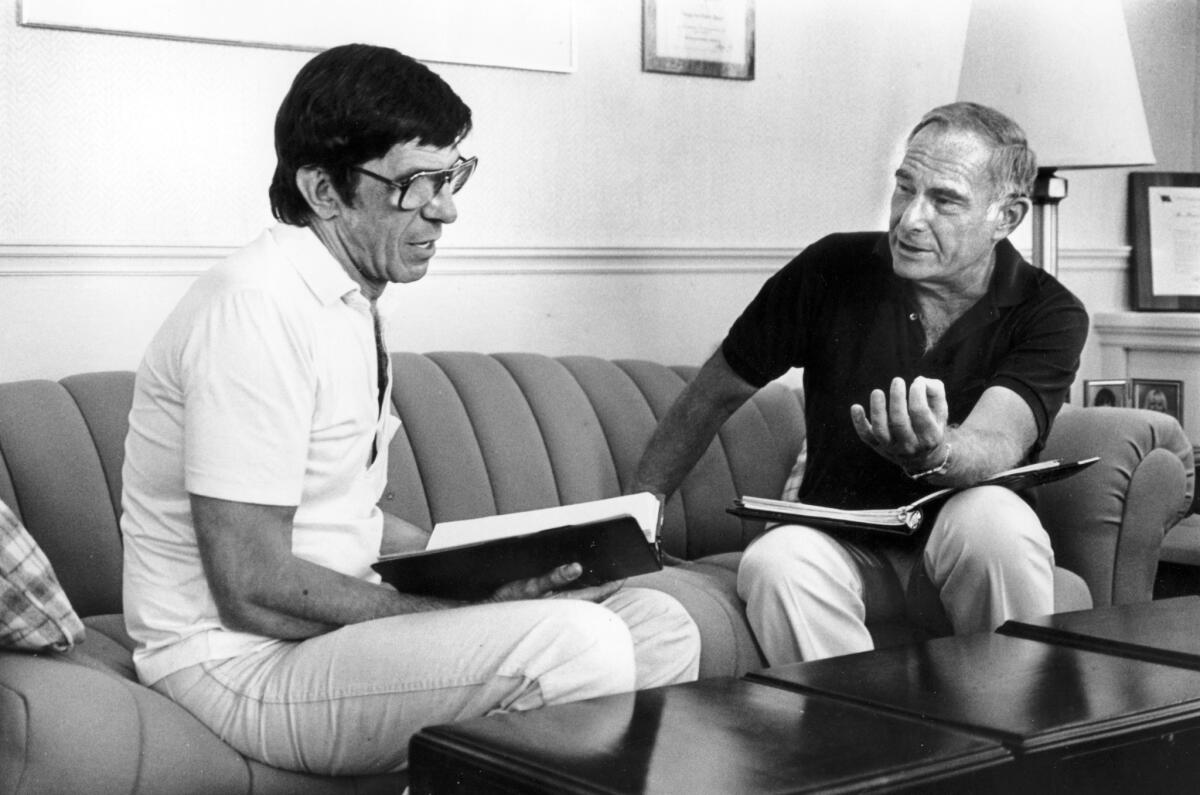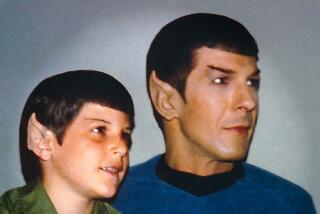From the Archives: ‘Star Trek III’: Triumph of innocence

- Share via
You didn’t really think you’d seen the last of Leonard Nimoy’s pointy-eared Capt. Spock, did you?
At the end of “Star Trek II: The Wrath of Khan,” you may recall, Spock sacrificed himself during the birth of the planet Genesis. But what would “Star Trek” be without the half-human, half-Vulcan, implacably logical as Spock?
“Star Trek III: The Search for Spock” (San Diego area theaters) thus becomes for writer-producer Harve Bennett an exercise in ingenuity in the attempt to resurrect our hero. Happily, however, Bennett doesn’t settle for mere contrivance but has come up the another splendid adventure that’s especially appealing right now/ That’s because “Star Trek III” in its unabashed, deliberate squareness in all aspects — from acting to its unsophisticated comic-strip look — comes out strongly for the old-fashion virtues of loyalty, bravery and sacrifice. For all its spectacle in space, its humanity once again outweighs its hardware, and its innocence is downright endearing in contrast with the empty mechanical violence of “Indiana Jones and the Temple of Doom.” (It’s amazing that both are rated PG.)
William Shatner’s stalwart Admiral Kirk and his belovedly familiar crew (DeForest Kelley, James Doohan, Walter Koenig, George Takei and Nichelle Nichols) are deftly maneuvered into returning to Genesis to search for the remains of Spock and to transport them to his native planet. But strange phenomena are occurring on Genesis, all of which has not gone unnoticed bu the mighty warlord (Christopher Lloyd, a truly majestic villain of Shakespearean stature) of the Klingons, those evil folks with the bumpy brows.
There are plenty of exploits for Shatner et al. to enrage in before arriving at the moment of truth as to whether Spock can actually return.
Nimoy may be off-camera, but he has a new role as the film’s director, as appropriate a piece of casting as Spock or was (or is?). He respects his longtime colleagues, bringing out the their best, and also knows how to bring out the humor in Bennett’s script, affectionately undercutting the inherent corniness in the Star Trek mythology. With the second “Star Trek,” the regulars learned to relax and stopped trying to look as young as they did in the TV series days. Consequently, much of the poignancy of this film, as in “Star Trek II,” derives from its acknowledgement of the passing of time.
As a production, “Star Trek III” is impressive without trying to overwhelm, in keeping with the spirit of its source. But it does possess scale and scope, and Marin County’s Industrial Light and Magic has supplied all the appropriate special visual effects. Art director John E. Chilberg II has come up with an especially dramatic sculptured set for Dame Judith Anderson’s amusingly regal high priestess of the Vulcans (it looks like something Isamu Noguchi might have designed for Martha Graham), and James Horner’s score is rightfully rousing.
“Star Trek III” is not as much of a separate entity as its predecessor — still the best in the series — was. In fact, it’s so much a sequel that it might confuse some who haven’t seen the earlier film. Yet “Star Trek III” has a genuine spirituality, and, at its end, you may be surprised, especially if you’re not really a Trekkie, to realize how moved you’ve been.
More to Read
Only good movies
Get the Indie Focus newsletter, Mark Olsen's weekly guide to the world of cinema.
You may occasionally receive promotional content from the Los Angeles Times.










